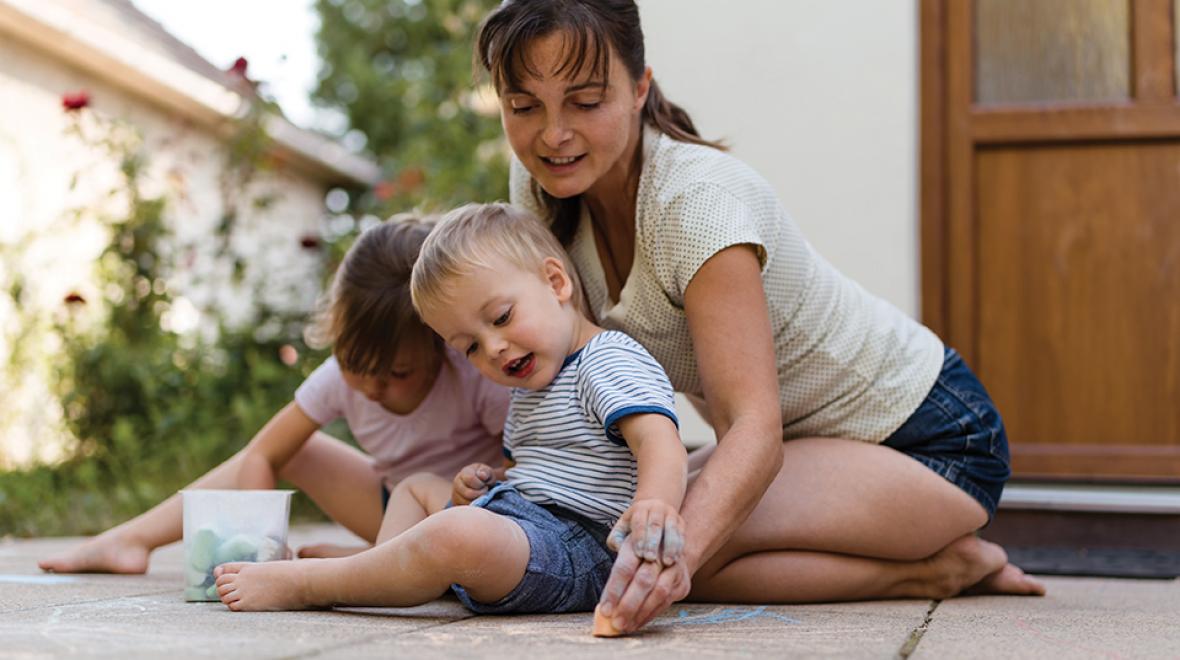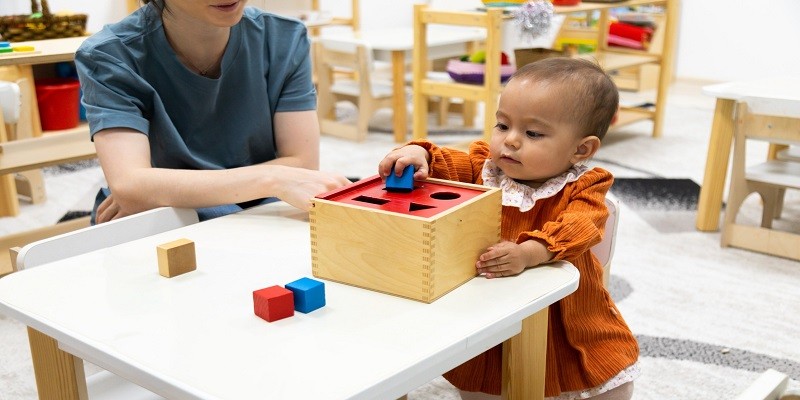Last Updated on January 15, 2025
Child-led parenting is an approach that emphasizes allowing children to make their own choices and decisions. It prioritizes children’s needs and interests, enabling them to explore and learn independently.
This approach fosters greater self-confidence and problem-solving skills in children as they grow. It also encourages the development of motor skills through self-feeding and self-movement. Child-led parenting promotes a sense of empowerment and helps children develop their own unique identity and self-worth.
Instead of relying on punishment and rewards, it focuses on empathy, respect, understanding, and setting healthy boundaries.
Child Led Parenting
Child-led parenting is an approach that prioritizes children’s needs and interests, allowing them to make choices and decisions on their own. This method promotes independence, problem-solving skills, and self-confidence in children.
Definition And Explanation Of Child Led Parenting
Child-led parenting is an approach to parenting that centers around empowering children to take an active role in their own lives and decision-making process. It emphasizes the importance of allowing children to explore, learn, and grow at their own pace, while providing a safe and supportive environment. This parenting style recognizes that children are naturally curious and capable and seeks to foster their independence and self-confidence.
How Child Led Parenting Differs From Traditional Parenting Styles
Child-led parenting differs from traditional parenting styles such as authoritarian or permissive parenting. Instead of being driven by strict rules or controlling behavior, child-led parenting focuses on respecting and honoring children’s autonomy. It values the child’s individuality, preferences, and interests, allowing them to shape their own experiences and choices. This approach emphasizes collaboration rather than authority, fostering a healthy and trusting relationship between parents and children.
Key Principles And Values Of Child Led Parenting
Child-led parenting is guided by several key principles and values that shape its philosophy. These include:
- Respect for children’s autonomy and individuality
- Creating a safe and nurturing environment for exploration and self-discovery
- Encouraging open communication and active listening between parents and children
- Valuing children’s perspectives and ideas
- Promoting independence and self-confidence
- Allowing children to make age-appropriate choices and decisions
Benefits For Both Children And Parents
Child-led parenting offers numerous benefits for both children and parents alike. For children, it:
- Enhances self-confidence and self-esteem
- Promotes critical thinking and problem-solving skills
- Fosters creativity and independent thought
- Develops a sense of responsibility and accountability
- Supports emotional intelligence and empathy
- Encourages a lifelong love for learning
- Strengthens the parent-child bond through trust and mutual respect
- Reduces power struggles and conflict
- Increases parental confidence and satisfaction
- Allows parents to learn from their children and gain new perspectives
- Enables parents to support and guide their children effectively
Implementing Child Led Parenting
Incorporating child-led parenting into your daily routine can have numerous benefits for both you and your child. It emphasizes the importance of allowing children to express themselves, make choices, and develop autonomy. By creating a supportive and nurturing environment, encouraging self-expression, and allowing children to make choices and decisions, you can foster a healthy and positive upbringing. However, it is also important to set age-appropriate boundaries and strike a balance between child-led parenting and providing guidance and structure.
Creating A Supportive And Nurturing Environment
A supportive and nurturing environment is crucial for child-led parenting. This involves creating a space where your child feels safe, loved, and encouraged to explore their interests and emotions. Provide plenty of opportunities for open communication and active listening, so your child feels heard and supported.
Encouraging Self-expression And Autonomy
Child-led parenting places a strong emphasis on allowing children to express themselves freely. Encourage your child to share their feelings, thoughts, and ideas, and validate their emotions. This helps them develop a strong sense of self and confidence in their abilities. By giving your child autonomy over their choices and activities, you foster a sense of independence and enable them to take ownership of their decisions.
Allowing Children To Make Choices And Decisions
One key aspect of child-led parenting is the importance of allowing children to make choices and decisions. This helps them develop decision-making skills and a sense of responsibility. Offer your child age-appropriate choices throughout the day, such as what clothes to wear, what activities to engage in, or what snacks to eat. Giving them the freedom to make choices within appropriate boundaries empowers them and encourages their self-esteem.
Setting Age-appropriate Boundaries
While child-led parenting encourages independence, it is still necessary to set age-appropriate boundaries. Boundaries provide children with a sense of security and help them understand limits. Clearly communicate your expectations and rules, ensuring they align with your child’s development stage. Consistency is key, as it helps children understand and respect boundaries.
Balancing Child-led Parenting With Guidance And Structure
Achieving a balance between child-led parenting and guidance is crucial. While it’s important to allow your child freedom and autonomy, they also need guidance and structure to navigate the world. Provide gentle guidance and support when needed, offering suggestions and alternatives without imposing your own preferences. This ensures your child feels supported while still having the opportunity to explore their own interests and make decisions.
Practical Examples And Tips For Child Led Parenting
One of the key principles of child-led parenting is giving children the freedom to explore their own interests and make choices about how they spend their time. Incorporating child-led activities and play into your daily routine helps foster a sense of independence and autonomy in your child.
Here are some practical examples and tips for incorporating child-led activities and play:
- Provide a variety of age-appropriate toys, games, and materials that encourage exploration and creativity.
- Schedule regular unstructured playtime where your child can freely choose what to play and how to play.
- Engage in open-ended conversations with your child about their interests and ideas, encouraging them to express their thoughts and feelings.
- Take your child to places such as parks, museums, or libraries where they can explore their surroundings and follow their curiosity.
Promoting independence and problem-solving skills is another important aspect of child-led parenting. By allowing children to make decisions and solve problems on their own, you empower them to develop essential life skills.
Here are some practical examples and tips for promoting independence and problem-solving skills:
- Involve your child in age-appropriate household chores, such as setting the table or putting away toys, giving them a sense of responsibility and accomplishment.
- Encourage your child to participate in decision-making processes, whether it’s choosing their outfits, planning their activities, or making choices about their meals.
- Resist the urge to intervene immediately when your child faces a challenge or difficulty. Instead, offer guidance and support, allowing them to come up with their own solutions.
- Provide opportunities for your child to experience natural consequences of their actions, helping them learn from their mistakes and become more self-reliant.
Child-led parenting emphasizes the importance of empowering children through decision-making. By involving them in the decision-making process, you show them that their opinions and choices matter.
Here are some practical examples and tips for empowering children through decision-making:
- Offer your child a range of options when making decisions, allowing them to weigh the pros and cons and choose what they feel is best.
- Encourage your child to express their preferences and thoughts, actively listening to their ideas and respecting their opinions.
- Provide guidance and support when necessary, helping them navigate through decision-making processes and understand the consequences of their choices.
- Model positive decision-making by making thoughtful decisions yourself and explaining the reasoning behind your choices.
Nurturing emotional intelligence and self-awareness is an essential aspect of child-led parenting. By supporting your child’s emotional development, you help them understand and manage their feelings, leading to a healthier sense of self.
Here are some practical examples and tips for nurturing emotional intelligence and self-awareness:
- Encourage open and honest communication with your child, creating a safe space where they can freely express their emotions without judgment.
- Teach your child about different emotions and help them identify and label their own feelings.
- Practice active listening when your child talks about their emotions, validating their experiences and offering empathy and support.
- Model healthy emotional expression and regulation, showing your child that it’s okay to feel and express emotions in a constructive way.

Credit: www.parentmap.com
Frequently Asked Questions Of What Is Child Led Parenting?
What Are The Benefits Of Child Led Parenting?
Child-led parenting benefits children by promoting self-confidence and problem-solving skills. It also encourages natural development of motor skills through self-feeding and self-movement.
Can You Give An Example Of A Child Led Activity?
Child-led activities are when children are given the freedom to choose their own activities, such as playing in the sandpit, doing arts and crafts, or reading a book. This approach allows children to explore and learn independently, promoting self-confidence and problem-solving skills.
What Is Gentle Child Led Parenting?
Gentle child led parenting focuses on raising confident and happy children through empathy, respect, and understanding. It allows children to make choices and decisions on their own, promoting independence and age-appropriate development. Unlike traditional parenting, it emphasizes setting healthy boundaries instead of punishment and reward.
What Is The Difference Between Parent-led And Baby-led?
Parent-led parenting is an approach where parents make choices and decisions for their children. Baby-led parenting allows babies to make choices and decisions on their own.
What Is Child-led Parenting?
Child-led parenting is an approach that focuses on enabling children to make choices and decisions on their own.
What Are The Benefits Of Child-led Parenting?
Children who have experienced child-led parenting tend to exhibit greater self-confidence and problem-solving skills. It also encourages the development of motor skills through self-feeding and self-movement.
Conclusion
Child led parenting is an empowering approach that allows children to make their own choices and decisions. This approach prioritizes their needs and interests, encouraging them to explore, learn, and develop independently. It fosters self-confidence, problem-solving skills, and enhances motor skills through activities like self-feeding and self-movement.
By embracing child-led parenting, parents can raise confident, independent, and happy children who have a strong sense of self-worth. It is a style of parenting that promotes the unique identity and growth of each child.

